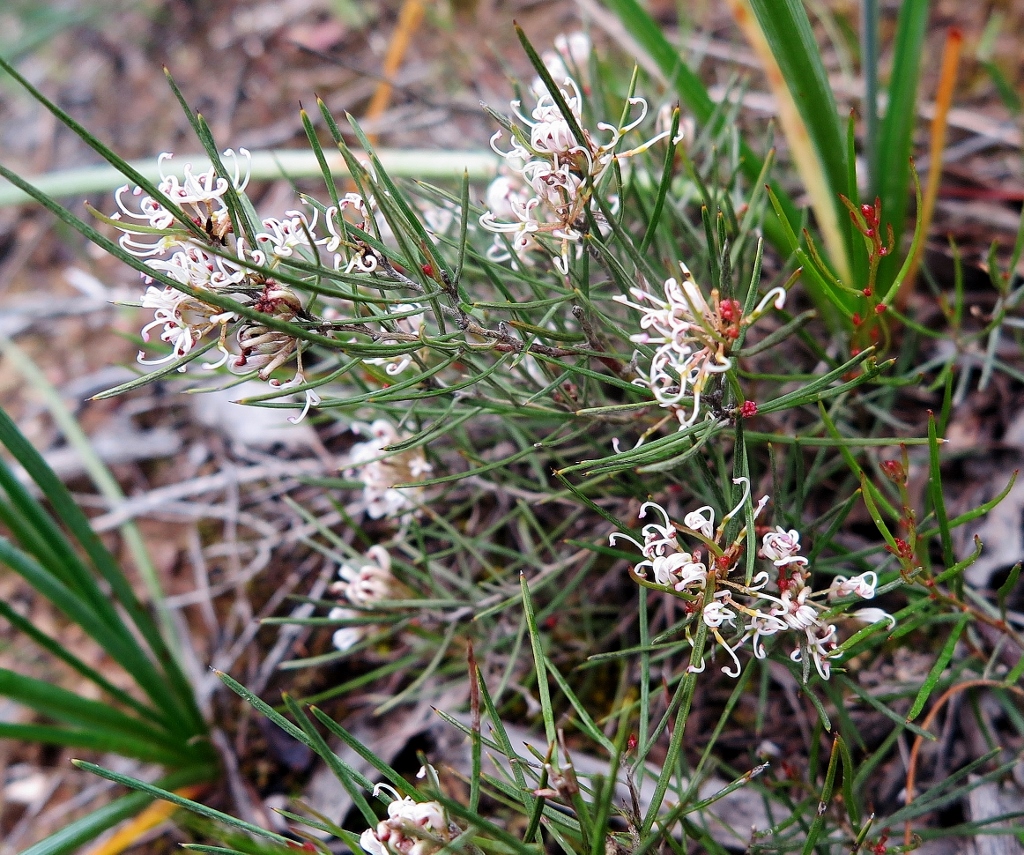Forest Fire management proposes to burn 311 hectares of the Maldon Historic Reserve, near the railway reserve. There are a few questions, contradictions and complexities attached to this burn proposal: see our Posts, with a map, here, here and here. The area is a biodiversity hotspot, and environmentalists have concerns about this exercise. They met with fire officers last week to discuss some of them. Local representatives from Maldon, Muckleford and Castlemaine, including FOBIF, were organised by the Friends of the Maldon Historic Reserve.

Grevillea micrantha, Maldon Historic Reserve: it’s critically endangered, and its reaction to fire is uncertain.
Whatever the complexities, fire officers are adamant that this patch of bushland has reached a ‘trigger point’ of fuel accumulation, and needs reduction. The group walked over a section of the zone, near Donkey Farm track, and several ideas were fielded on the challenge of reconciling the apparently contradictory aims in fire management.
Among other ideas raised, Indigenous ranger Trent Nelson described the forest in this area as ‘sick’, and in need of ‘gardening’. The idea of ‘forest gardening’ is new to most people. You can find it explained here. It is quite different from the approaches currently practised by forest managers, including the proposed reduction burns.
One thing all do agree on: the area in question is particularly rich in biodiversity (it’s looking great right now). What no one is confident about is, how fire affects the various species of plants in the area. Of particular interest is the presence of Grevillea micrantha, a critically endangered species. How will it react to fire? It would seem logical that managers would have access to detailed research info on this question, which would enable them to go about their business more effectively. It seems they don’t.
As we’ve emphasised before, management of anything complex should be based on detailed knowledge. This is blindingly obvious when you’re talking, for example, of the maintenance of an Airbus A340. It seems, though, that in the management of an infinitely more complex phenomenon, a native forest, broad brush techniques will have to do: and though fire officers bend over backwards to accommodate biodiversity concerns, fuel reduction overrules other considerations.
The burn will go ahead in autumn. A second thing everyone seems to agree on now: a patchy cool burn is better than a large area hot one, both from a fuel reduction and a biodiversity point of view.




 Click on image for info/order page
Click on image for info/order page Click on image for info/order page
Click on image for info/order page Click on image for info/order page
Click on image for info/order page




















